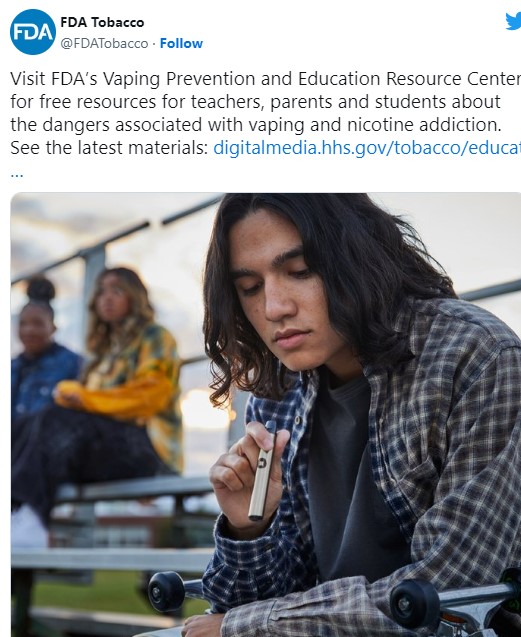Unveiling the Health Risks of Inhaling Chemicals and What You Can Do to Protect Yourself

Jake, a teenager from Winslow, ME, started vaping when he was 16. He and his friends preferred vaping over cigarettes because of the odorless and smokeless feature of vapes, making it easier to use in school bathrooms without being caught. He became dependent on vaping, using a whole cartridge of vape liquid, equivalent to one pack of cigarettes, within one school day. By his first year in college, he further increased his use, and this is when he realized the extent of his dependency as it got pricey. However, Jake was not alone in this growing trend of teenage vaping. Between 2017 and 2019, vaping rates among teenagers in Maine doubled from 15.3% to 28.7%. According to the CDC, in 2021, 11% of high schoolers regularly smoked e-cigarettes, and 28% have tried the devices.
E-cigarettes are considered tobacco products by the FDA since many contain nicotine derived from tobacco, and for many teenagers, this habit is likely to carry into adulthood. ENDS, like vapes, have been touted by manufacturers and some in the medical field as a healthier alternative to cigarettes and a way to help smokers give up the habit. However, this was not how Jake, who had never used traditional cigarettes, started vaping, nor how he convinced his mother that it was safe. He sold the idea to his mother by saying, “It’s all organic and natural flavoring, it’s just flavored water.” Mary Lou Warn, Jake’s mother, researched the health effects of vaping but did not find much information online. However, she knew they were dangerous because nothing but fresh air should enter the lungs.
Despite being an athlete in high school, Jake found his asthma worsening as he transitioned to college. Mary Lou Warn noticed changes in her son’s health off the field, such as constant coughing, poor sleep, and appetite, which she attributed to addiction. Vaping irritated Jake’s throat, and he experienced uncontrollable nosebleeds.
Since Warn first researched the effects of e-cigarettes on respiratory health in 2017, many studies have examined first-time smokers who never used combustible tobacco products and the short-term health outcomes. These studies suggest that vaping may worsen bronchitis and asthma, raise blood pressure, interfere with brain development in young users, suppress the immune system, and increase the risk of getting a chronic lung disease. Other research conducted on mice and cell cultures found that the vapor or extracts from vapes damaged the chemical structure of DNA. However, the limited number of long-term human studies makes it hard to pinpoint the health outcomes of e-cigarette users in the future. Conclusive studies linking commercial cigarette use to deaths from heart disease and cancer didn’t emerge until the mid-1950s, decades after manufacturers began mass production and marketing in the early 20th century.
According to Nigar Nargis, PhD, senior scientific director of tobacco control research at the American Cancer Society, it could take years before researchers gain a clear understanding of the health implications of long-term e-cigarette use. She said, “There hasn’t been any such study to establish the direct link from [vaping] to cancer, but it is understood that it [vaping] may promote the development of cancer and lung damage and inflammation.”
For decades, advocates have raised awareness of the harms of tobacco use, which led to a sharp decline in tobacco-related illnesses such as lung cancer. However, Hilary Schneider, Maine’s director of government relations for the American Cancer Society Cancer Action Network, fears that the uptick in the use of vapes, especially among those who never smoked or those who use both combustible and e-cigarettes, may reverse declines in the rates of smoking-related diseases. Multiple studies suggest that inhaling chemicals can be harmful to human health. These chemicals can cause a range of health issues, including respiratory problems, headaches, and nausea. Some chemicals can even cause cancer or other serious illnesses.
It is important to take steps to reduce your exposure to harmful chemicals. This can include using natural or non-toxic cleaning products, avoiding smoking or exposure to secondhand smoke, and using protective equipment when working with chemicals.
In addition to taking steps to reduce your exposure to harmful chemicals, you should also be aware of the signs and symptoms of chemical exposure. These can include difficulty breathing, dizziness, headaches, and skin irritation. If you experience any of these symptoms, it is important to seek medical attention immediately.
Overall, it is important to be proactive about protecting your health from harmful chemicals. By taking steps to reduce your exposure and being aware of the signs and symptoms of chemical exposure, you can help ensure that you stay healthy and safe.


